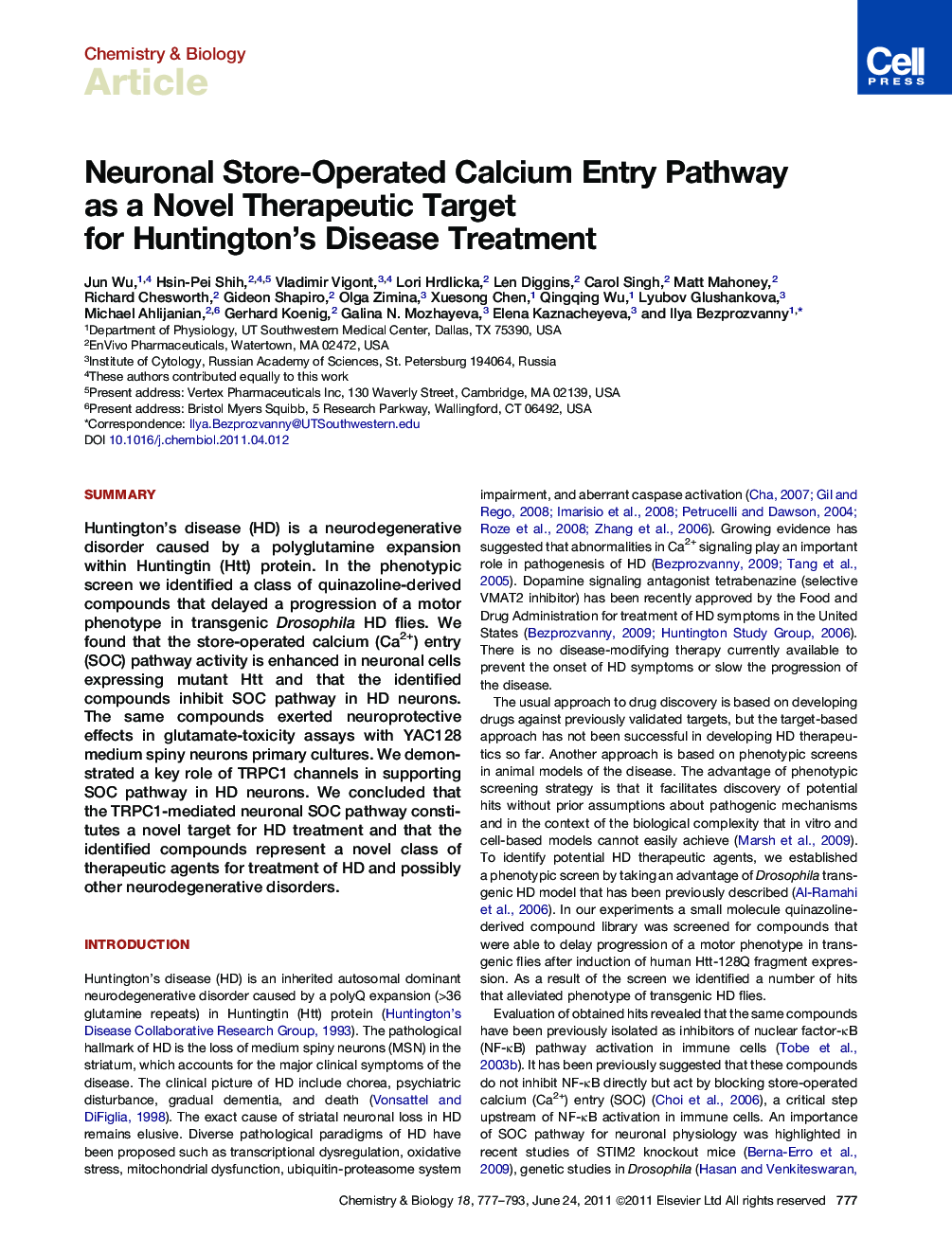| Article ID | Journal | Published Year | Pages | File Type |
|---|---|---|---|---|
| 1391413 | Chemistry & Biology | 2011 | 17 Pages |
SummaryHuntington's disease (HD) is a neurodegenerative disorder caused by a polyglutamine expansion within Huntingtin (Htt) protein. In the phenotypic screen we identified a class of quinazoline-derived compounds that delayed a progression of a motor phenotype in transgenic Drosophila HD flies. We found that the store-operated calcium (Ca2+) entry (SOC) pathway activity is enhanced in neuronal cells expressing mutant Htt and that the identified compounds inhibit SOC pathway in HD neurons. The same compounds exerted neuroprotective effects in glutamate-toxicity assays with YAC128 medium spiny neurons primary cultures. We demonstrated a key role of TRPC1 channels in supporting SOC pathway in HD neurons. We concluded that the TRPC1-mediated neuronal SOC pathway constitutes a novel target for HD treatment and that the identified compounds represent a novel class of therapeutic agents for treatment of HD and possibly other neurodegenerative disorders.
► Store-operated Ca2+ entry (SOC) pathway is enhanced in Huntington's disease (HD) neurons ► Identified a novel class of quinazoline-derived compounds that inhibit SOC pathway in HD neurons ► Identified compounds exert neuroprotective effects in transgenic HD flies and transgenic HD mouse neurons ► Established key role of TRPC1 channels in supporting SOC pathway in HD neurons
